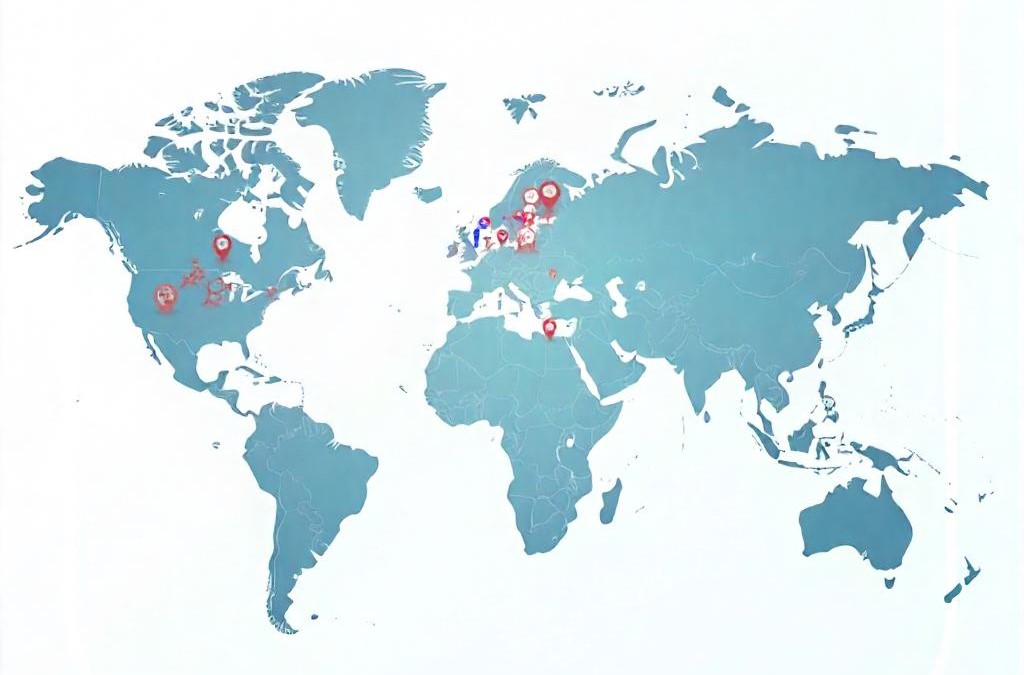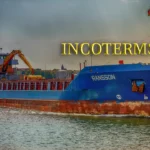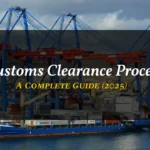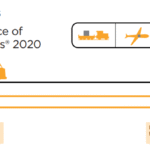
Before we dive into the export documents required, it’s important to understand the basics of how to start an export business in 2025. Many first-time exporters focus solely on paperwork, but your documents make sense only when the business foundation is clear. Click here to start reading ‘how to start an export business in 2025’
Discover the complete list of export documents required in 2025. From proforma invoice to bill of lading, learn every document needed for a smooth export process.
Introduction
Exporting goods across borders is a rewarding but intricate task. Among the many responsibilities exporters face, proper documentation is perhaps the most critical. Inaccurate or missing documents can lead to delays, fines, or even confiscated shipments. This guide covers everything you need to know about export documents required in 2025, whether you’re a new exporter or a seasoned international trader.
Why Export Documentation Is Crucial
Export documentation ensures that:
Goods are shipped smoothly.
Customs authorities can verify shipment legality.
Payments through banks are processed efficiently under LC or other terms.
Disputes can be legally resolved with proper paperwork.
Without accurate documents, even a perfectly packed shipment might not leave the port.
Types of export documents required
Export documentation can be divided into six major categories:
Commercial Documents
1. Proforma Invoice
The first document in the export process.
Acts as a quotation from the exporter to the importer.
Includes price, quantity, product details, shipping terms, and payment conditions.
2. Commercial Invoice
A legal document issued by the seller (exporter) to the buyer (importer).
Includes details about the transaction like:
Invoice number
Date
Buyer/seller details
Product description
HS Code
Quantity, rate, total value
Terms like FOB, CIF
3. Packing List
Specifies the contents of each package or container.
Used by customs to check the shipment.
Includes weight, dimensions, packaging type, marks, and numbers.
4. Export Contract or Purchase Order
Legally binding agreement between exporter and importer.
Details the terms agreed upon, including product specs, pricing, delivery, and penalties.
Regulatory Documents
5. Shipping Bill or Bill of Export
Mandatory for customs clearance.
Generated electronically through ICEGATE in India.
Includes exporter/importer details, invoice, packing list, HS Code, and port details.
6. Export Declaration Form (EDF)
Required by RBI for foreign exchange tracking.
Submitted through banks (AD Category I) or online under EDPMS (Export Data Processing and Monitoring System).
7. GST Invoice & LUT (Letter of Undertaking)
For exporters under GST regime in India:
LUT is required for zero-rated exports without paying IGST.
GST Invoice includes SAC/HSN, tax details (if applicable), and GSTIN numbers.
8. AD Code Registration
AD (Authorized Dealer) Code from the bank must be registered with customs to generate shipping bills.
Transport Documents
9. Bill of Lading (B/L)
Issued by the shipping line.
Acts as:
A receipt for goods shipped
A contract of carriage
A document of title
Types:
Master B/L – issued by carrier
House B/L – issued by freight forwarder
10. Airway Bill (AWB)
For air shipments.
Non-negotiable document used similarly to a B/L but without transfer of title.
11. LR (Lorry Receipt) or Rail Receipt
For inland or rail transport to port.
Insurance Documents
12. Insurance Certificate
Certifies that the goods are insured during transit.
Usually mandatory under CIF (Cost, Insurance & Freight) terms.
Details Include:
Insured value
Type of coverage
Transport route and duration
Certificate-related Documents
13. Certificate of Origin (COO)
Certifies where the goods were manufactured.
Required for preferential tariffs or customs clearance.
Issued by authorized bodies like Chambers of Commerce, DGFT, etc.
Types:
Preferential COO (under FTAs)
Non-preferential COO
14. Inspection Certificate
Issued by agencies like SGS or Bureau Veritas.
Confirms that goods meet buyer specifications or legal standards.
15. Fumigation Certificate
Certifies that the cargo (especially agricultural or wooden) is pest-free.
Required in many countries for plant-based or food exports.
16. Phytosanitary Certificate
Required for agricultural exports.
Certifies the goods are free from harmful pests or diseases.
17. Health Certificate
For exports of food, meat, dairy, or seafood.
Issued by health or food safety authorities of the exporting country.
Other Supporting Documents
18. Bank Realization Certificate (BRC)
Issued by the exporter’s bank after payment realization.
Required to claim export incentives under DGFT.
19. DGFT Related Licenses
Includes:
IEC Code (Importer Exporter Code)
RCMC (Registration-cum-Membership Certificate)
Export Promotion Council Certificates
20. Letter of Credit (LC) / Bank Guarantee / Advance Payment Proof
Depending on payment terms, relevant banking documents are essential.
21. Declaration Forms & Affidavits
Includes declarations of value, anti-dumping compliance, or country-specific affidavits.
Country-Specific Export Document Required
India to USA: export documents required
FDA approval for food items.
Fumigation + health certificates.
India to Europe: export documents required
CE certification (for certain goods).
REACH compliance for chemicals.
Phytosanitary for agri-exports.
India to Middle East: export documents required
Halal Certification (for meat/food).
SASO Certificate (Saudi Arabia).
Legalized documents through embassy.
Tip: Always check the destination country’s trade portal or buyer’s documentation checklist.
Digital Documentation & Paperless Trade
In 2025, the shift to digital continues.
Key Platforms in India:
ICEGATE: For shipping bill & customs clearance
DGFT Portal: For COO, IEC, LUT
E-Sanchit: Upload supporting documents digitally
Bank’s EDPMS: Tracks export payments
Benefits:
Faster processing
Lower cost
Enhanced tracking & compliance
Secure document sharing
Tips for Efficient Export Documentation
Always maintain a document checklist per shipment.
Use professional freight forwarders or CHA for port-related documentation.
Digitize documents for easier retrieval and backup.
Train staff in INCOTERMS, HS Codes, and EDI systems.
Always verify document accuracy before submission.
Common Mistakes to Avoid
Inconsistent HS Codes across invoices and shipping bills.
Incorrect or expired Certificates of Origin.
Missing AD Code at customs.
Not updating IEC or DGFT profile.
Errors in buyer or port details.
Remember: Even small mistakes can cause customs delays or shipment rejections.
Conclusion
In 2025, exporting is easier than ever, but still demands accurate and complete documentation. Each document plays a role in ensuring your shipment reaches safely, your payment is secure, and your business complies with international and domestic laws. Whether you’re shipping rice, textiles, or software – your documentation game must be solid.
Stay updated with DGFT, customs notifications, and destination country requirements. With digitization tools like ICEGATE, DGFT portal, and paperless certificates, you can now export more efficiently than ever.
Export Documentation FAQs
Q1. Is IEC code mandatory for export from India?
Yes, it’s the first legal requirement for any exporter in India.
Q2. Can I export without a commercial invoice?
No. It’s the basic proof of sale and required by customs.
Q3. Is LUT compulsory for exports under GST?
Only if you’re exporting without paying IGST under zero-rated supply.
Q4. How do I generate a shipping bill?
Through ICEGATE portal after registering your AD Code and documents.
Q5. Who issues the Certificate of Origin?
Authorized bodies like DGFT, Export Promotion Councils, or Chambers of Commerce.
Related posts:
 How to Start an Export Business in India in 2025 – Beginner’s Guide
How to Start an Export Business in India in 2025 – Beginner’s Guide
 Incoterms Explained: The Ultimate Guide for Global Trade
Incoterms Explained: The Ultimate Guide for Global Trade
 Customs Clearance Process for Export Business: A Complete Guide (2025)
Customs Clearance Process for Export Business: A Complete Guide (2025)
 EX Works (EXW) Incoterms Explained: Exporter’s Complete Guide
EX Works (EXW) Incoterms Explained: Exporter’s Complete Guide
 Top 25 High margin export products from India
Top 25 High margin export products from India
 Demurrage, Detention, and Free Time in Shipping: Complete Guide for Exporters and Importers
Demurrage, Detention, and Free Time in Shipping: Complete Guide for Exporters and Importers
